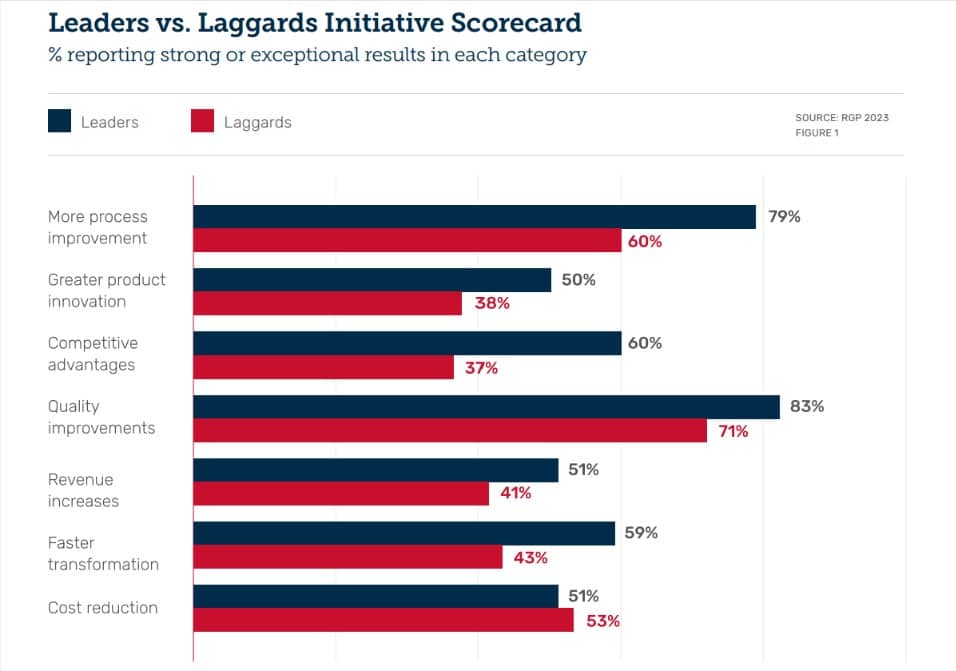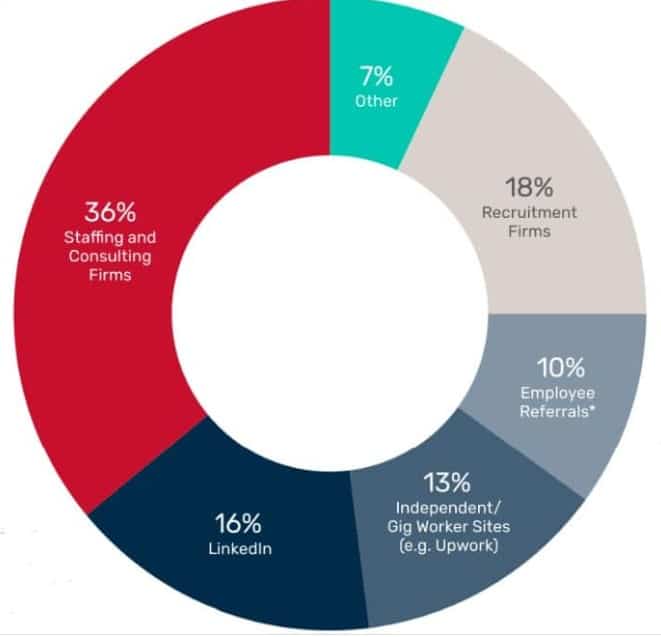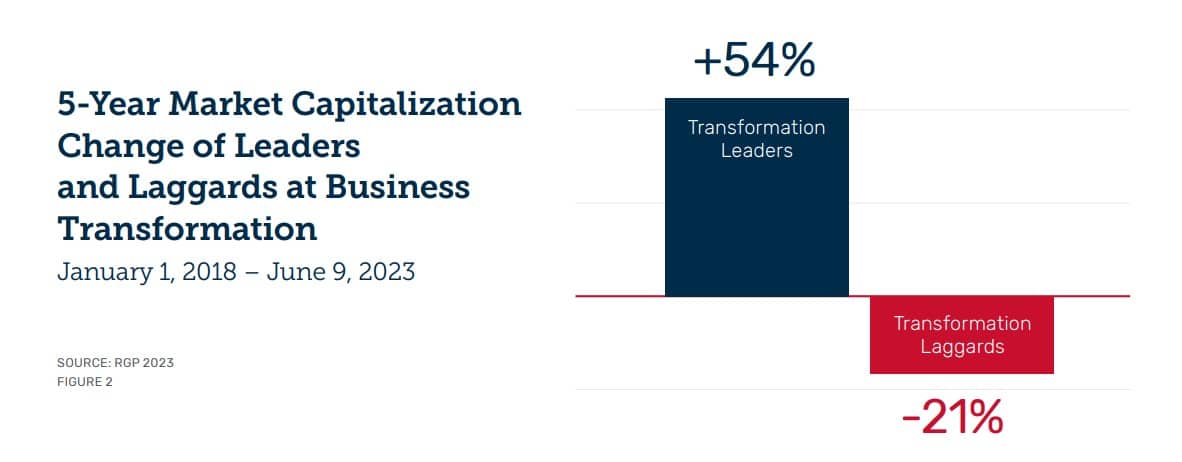As technology firmly commands business strategy, with the mighty AI out in front, achieving a successful digital transformation is now paramount as companies can’t risk falling behind the curve in a still-rocky economic landscape. Business leaders are well aware of the urgency, and new research from global consulting firm RGP reveals that an unprecedented reconceptualization of the workforce is underway, driven by C-suite execs as they move toward a greater equilibrium of full-time employees and outside experts.
The firm’s survey of more than 1,000 business leaders found that large global companies have an average of 20 transformation initiatives—defined as $1 million-plus projects intended to improve revenues, profits, costs, cycle-time, quality or other metrics—in progress this year alone. Most respondents predicted an even greater number of transformation efforts by 2026, even though 42 percent indicated they did not have enough internal talent to staff their transformation initiatives in 2022.

In response to this whirlwind of transformation and a persistent talent shortage, C-suite leaders are shifting their workforce strategies to a more balanced proportion of full-time employees and outside talent. The proportion of outside talent on transformation teams increased from 38 percent in 2020 to 45 percent in 2022, and leaders expect this figure to reach 48 percent by 2024.
“This workforce strategy of blending internal talent with skilled outsiders enables companies to build constant transformation into the core DNA of their businesses, and we refer to this as a Dynamic Workforce Model,” said Kate Duchene, chief executive officer of RGP, in a news release. “This concept is not very different from the way that Hollywood film productions use teams of independent contractors and employees from different companies to complete a short-term project. Organizations across other industries are starting to embrace this model for major transformation initiatives due to the competitive advantages it presents, and we believe this is happening across the workforce.”
Key sources of external talent for transformation leaders surveyed:

How a Dynamic Workforce Model can create a significant competitive advantage for businesses
An analysis of executives who reported that their organizations achieved key goals on every transformation initiative in 2022 (just 16 percent of respondents) shows that the market capitalization of publicly listed companies rose an average of 54 percent over the last five years. In contrast, the market capitalization of organizations that had achieved key goals in less than half their transformation initiatives declined an average of 21 percent during the same period.
The study also found that skills shortages have wide-reaching impacts on transformation initiatives, with 60 percent of respondents reporting project start delays and 53 percent reporting pushed-out completion dates. More than 40 percent reported missed critical goals, while 37 percent said insufficient internal skills have increased the difficulty of making important operational changes.

“Talent can collaborate effectively regardless of where they are physically located or who employs them, as long as they are experts in their field,” said Duchene. “C-suite leaders learned this during the pandemic, and they are embracing a more efficient and more profitable workforce model that enables them to pivot quickly without sacrificing vision, mission, and strategy. It is a new way of thinking that requires a re-evaluation of talent strategy and tech capabilities, and we are seeing more CFOs and CHROs partnering with CEOs to determine where they need injections of outside expertise.”
Download the full report here.
The findings are based on RGP’s June 2023 survey of 1,005 respondents from companies with at least $1 billion in revenue based in North America, Asia-Pacific, the UK, and the European Union. The sample was evenly divided between technology, financial services, life sciences, and healthcare companies.



